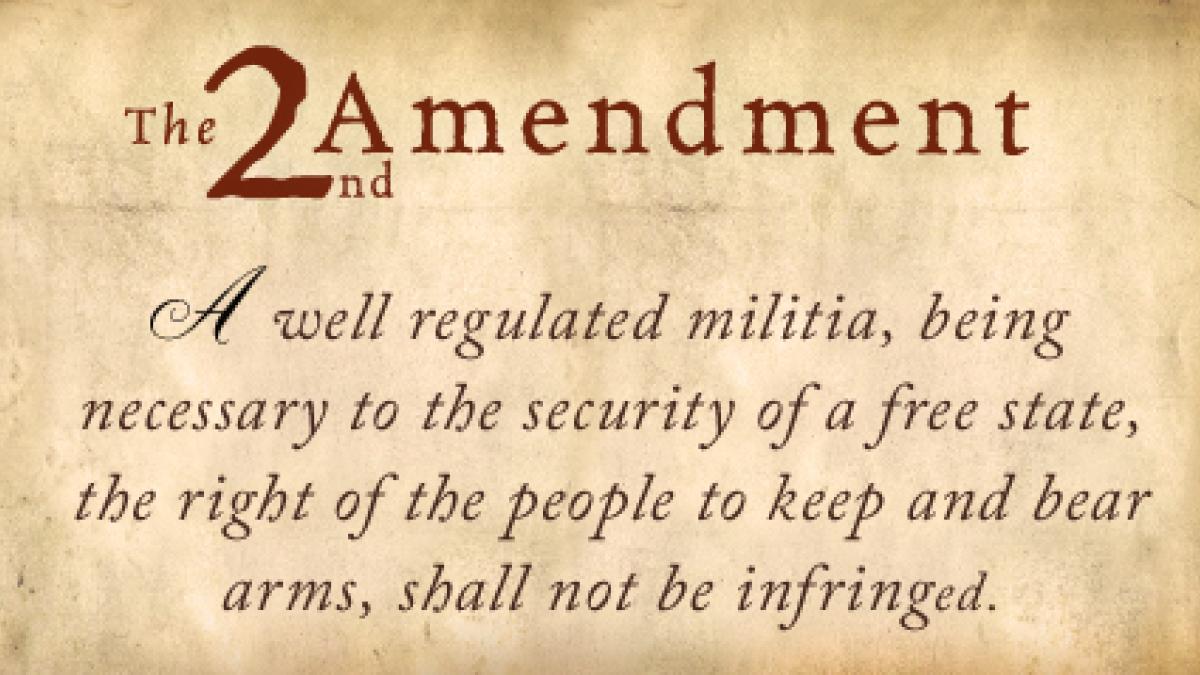The following essay is by LPFC Secretary, Tom Caldwell – a history buff and history teacher. Come to our Annual Convention this Saturday to discuss this and more!
The Second Amendment Sanctuary County Resolution endorsed by the Libertarian Party of Fresno County at its November 8th business meeting mentions the alleged 14th amendment three times. While the Right to Bear Arms and the Right to Self-Defense are inalienable rights as described by the unanimous Declaration of Independence, it is a mistake to assert those rights based on a fraudulent amendment.
The proposed 14th amendment would have been lawfully proposed had it not been for the unlawful expulsion of Senator John Stockton, of New Jersey. Stockton voted against proposing the amendment to the States. It was contrived that Stockton had been unlawfully elected by the legislature of New Jersey by a plurality – not a majority. Electing Senators by majority vote was not a requirement at that time. Still, the Senate leadership moved to expel Stockton, and did so by a simple majority vote. A simple majority vote is all that is necessary to refuse to seat a Senator-elect; but once seated it takes a two-thirds vote to expel a Senator (or Representative). Hence, Stockton’s expulsion was unlawful. But without Stockton, the two-thirds threshold to propose the 14th amendment was purportedly passed.
Having been fraudulently proposed the 14th amendment went to the States for false ratification. At final ratification there were 37 States in the Union. Three-fourths that number was necessary for ratification – 28. Ten of the eleven former Confederate states all rejected the amendment, leaving ratification one State short. As punishment the former Confederate States were placed under martial law until they ratified the 14th amendment. This was coercion, duress, not a voluntary act. Three States, New Jersey, Ohio, and Oregon, which had previously ratified the amendment, rescinded their ratifications. Two States rejected the amendment; two more States abstained (not taking action before ratification was declared). Furthermore, twelve States unlawfully altered the wording of the amendment, changing its meaning; and seven committed errors in capitalization and punctuation. A state legislature may not amend a proposed amendment; it may only be voted up or down. In all, the 14th amendment only received the assent of no more than between two to thirteen States, well short of the 27 that were necessary for ratification. The 14th amendment never was, and is not a legitimate part of our Constitution.
The 14th amendment, section one has given rise two one-fourth of the cases that reach the Supreme Court. In different generations, and sometimes the same justices have changed their minds about what the 14th amendment means. The following is an incomplete list:
- 1896 – Plessy v. Ferguson, separate but equal IS lawful
- 1954 – Brown v. Board of Education, separate by equal is NOT lawful.
- 1946 – Colgrove v. Green, the Federal judiciary has NO power to interfere with States in redrawing their legislative districts.
- 1962 – Baker v. Carr, the Federal judiciary has ALL power to interfere with States in redrawing their legislative districts.
- 1942 – Betts v. Brady, States are NOT required to provide indigent defendants with legal counsel.
- 1963 – Gideon v. Wainwright, States ARE required to provide indigent defendants with legal counsel.
- 1908 – Twining v. New Jersey, the Right not to Bear Witness Against Oneself applies to federal NOT State cases.
- 1964 – Malloy v. Hogan, the Right not to Bear Witness Against Oneself applies to federal AND State cases.
- 1927 – Whitney v. California, States MAY prohibit speech that might lead to civil disorder.
- 1969 – Brandenburg v. Ohio, States may NOT prohibit speech that might lead to civil disorder.
- 1942 – Valentine v. Chrestensen, commercial speech is NOT protected speech.
- 1976 – Virginia State Pharmacy Board v. Virginia Consumers Council, commercial speech IS protected speech.
- 1972 – Furman v. Georgia, the death penalty IS cruel and unusual punishment.
- 1976 – Gregg v. Georgia, the death penalty is NOT cruel and unusual punishment.
- NOTE: associate justices Stewart and White changed their positions between these two decisions.
- 1842 – Swift v. Tyson, there IS federal common law (as per Article VII of Amendment)
- 1938 – Eire Railroad v. Tompkins, there is NO federal common law (Article VII of Amendment notwithstanding)
The McDonald decision relies on forcing Article II of Amendment on the States via the fraudulent 14th amendment. Rights protected in this way are secure no more that the prejudiced ideologies that are held by five out of the nine of the black-robed executioners on the Supreme Court. Indeed, there are only 10 Articles in the Federal Bill of Rights; there are 32 sections in the much more expansive California Declaration of Rights. It makes more sense to rely on OUR Constitution(s) for the protection of our rights, and not the fraudulent 14th amendment.
The Declaration of Rights, in the California Constitution. section twenty-four states, “Rights guaranteed by this Constitution are not dependent on those guaranteed by the United States Constitution. …This declaration of rights may not be construed to impair or deny others retained by the people.” This incorporates an undefined number of rights that include the Right to Bear Arms and the Right of Self-Defense. Furthermore, section one of that same Declaration of Rights specifically refers to the Right to Self-Defense: “All people are by nature free and independent and have inalienable rights. Among these are enjoying and defending life and liberty, acquiring, possessing, and protecting property, and pursuing and obtaining safety, happiness, and privacy.” [emphasis added]

